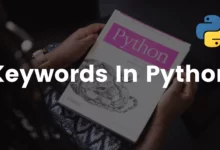An Introduction to Python Programming: A Guide for Beginners.

Table of Contents
What is Python?
Python is a high-level, general-purpose programming language with an elegant syntax that allows programmers to focus more on problem-solving than on syntax errors.
Python has become a big buzz in the field of modern software development, infrastructure management, and especially in Data Science and Artificial Intelligence.
Why choose Python over any other language?
When compared to any other high-level programming languages such as C++ and Java, it requires the programmer to develop lesser codes.
Python is designed to be simple and easy to read and write. Python can be utilized for a wide range of applications such as scripting, developing, and testing.
With the growing trend of Data Science and Machine Learning, Python has equally become one of the most important scripting languages in the 21st century, because of its wide range of libraries and frameworks.
Features of Python
- It is simple to use.
- It has elegant syntax and readability.
- It has a large library.
- It is cross-platform.
- It is a free and open-source programming language.
- Python codes are interpreted line by line at a time using the Interpreter.
- Object-oriented Programming can be achieved through Python Class.
- It can be integrated with other programming languages like C, C+, Java, and many more.
- This will also teach you most of the programming concepts.
Characteristics of Python
- There’s a rich collection of Python Data Types.
- Python is a platform-independent scripted language.
- Python provides more run-time flexibility.
- Libraries available in Python are cross-platform compatible.
- Python can be easily compiled to byte code
- Python also provides features to support functional and structured programming
- Python supports an interactive mode that allows interactive testing and debugging for snippets of code.
- In Python, there are no editing, debugging, testing, and compilation steps, so it is very fast.
Applications of Python
- Web Applications
- Creating Software Prototypes
- Scientific and Numeric Computing
- Network Programming
- Games and 3D Applications
- A Good Language to Teach Programming to Freshers
Check Out The Best Websites to Practice Coding Online.
Conclusion
In this article, we’ve introduced you to the basics of Python programming. We hope that these tips have been helpful for you, and if there is anything else we can do for you, please let us know by following our Twitter page or visiting our website today.






